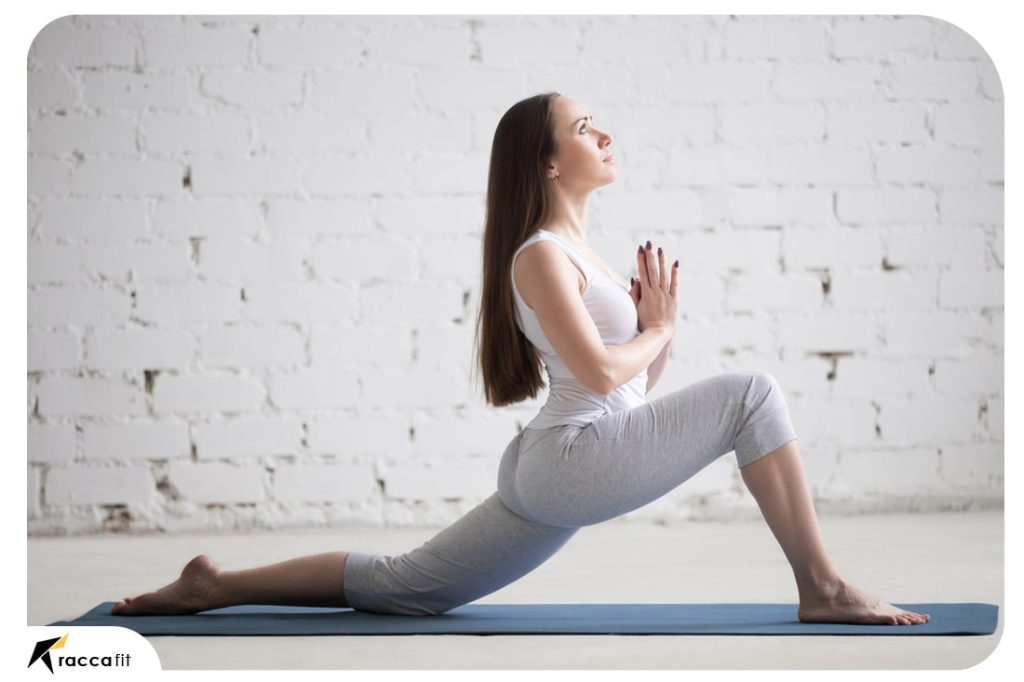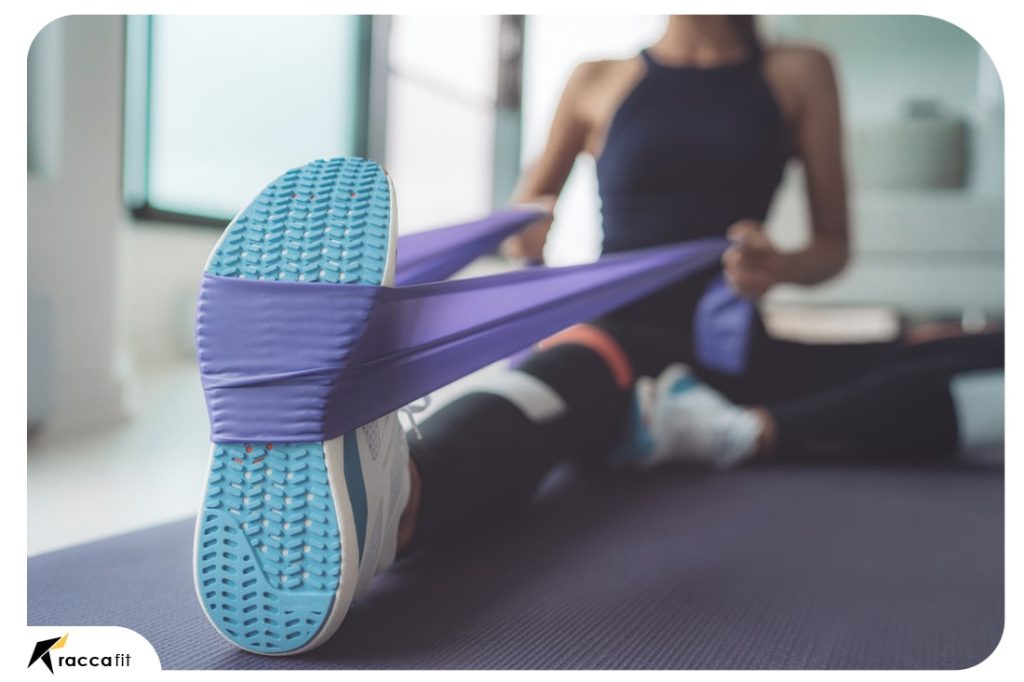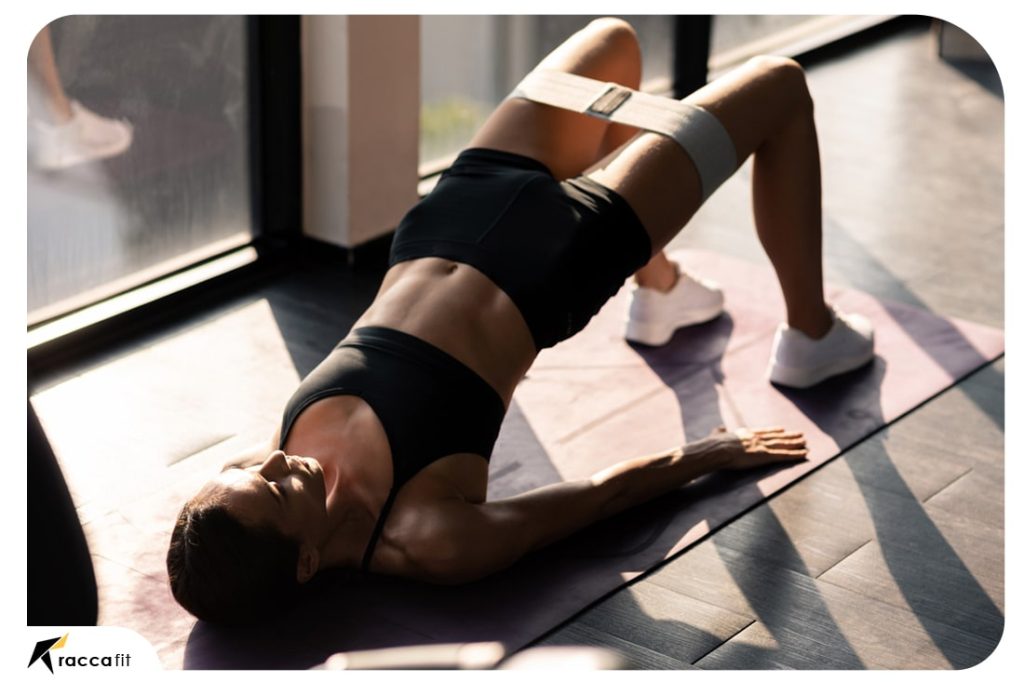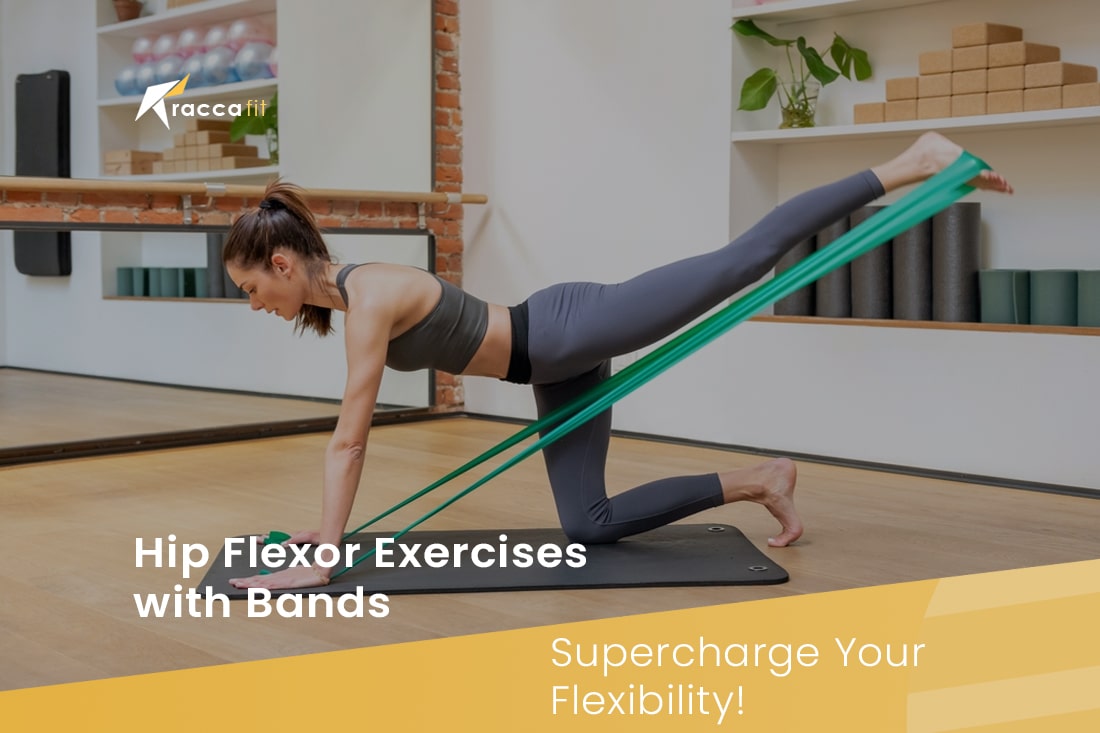The hip flexors play a crucial role in various movements, such as walking, running, and lifting. Keeping them strong and flexible is essential for overall mobility and preventing injuries. One effective way to target and strengthen the hip flexor muscles is by incorporating resistance bands into your exercise routine. In this article, we will explore different hip flexor exercises using bands, their benefits, proper technique, and other useful tips.
Introduction to Hip Flexors
The hip flexors are a group of muscles located in the front of the hip joint. They include the iliopsoas, rectus femoris, and sartorius muscles. These muscles work together to flex the hip joint, allowing you to lift your knees and bring your thighs toward your torso. Hip flexor strength and flexibility are crucial for movements like walking, running, jumping, and even sitting.
Importance of Strong Hip Flexors
Having strong hip flexors offers several benefits. They improve your posture, enhance athletic performance, and increase overall mobility. Strong hip flexors also contribute to core stability, as they connect the lower body to the upper body. Neglecting hip flexor strength can lead to imbalances, reduced range of motion, and an increased risk of injury.
Benefits of Using Resistance Bands for Hip Flexor Exercises
Resistance bands provide a versatile and effective tool for hip flexor exercises. They offer adjustable resistance, allowing you to gradually increase the challenge as your strength improves. Here are some key benefits of using resistance bands for hip flexor workouts:
- Targeted Activation: Resistance bands provide targeted resistance throughout the entire range of motion, ensuring optimal activation of the hip flexor muscles.
- Joint-Friendly: The elastic nature of resistance bands reduces joint stress, making them suitable for individuals with joint issues or previous injuries.
- Portable and Affordable: Resistance bands are lightweight and portable, making them convenient for home workouts or travel. They are also more affordable compared to other exercise equipment.
- Versatility: Resistance bands can be used to perform various exercises that target different muscle groups, providing a comprehensive full-body workout.
- Scalability: Resistance bands come in different resistance levels, allowing you to customize the intensity of your hip flexor exercises based on your fitness level and goals.

Choosing the Right Resistance Band for Hip Flexor Exercises
When selecting a resistance band for hip flexor exercises, consider the following factors:
- Resistance Level: Choose a band with an appropriate resistance level that challenges your hip flexor muscles without compromising your form.
- Length and Durability: Ensure the band is long enough to perform the desired exercises. It should also be made of high-quality materials that can withstand regular use.
- Comfort and Grip: Look for bands with comfortable handles or grips to prevent discomfort or slipping during exercises.
- Variety: Consider purchasing a set of bands with different resistance levels to accommodate your progress and provide options for different exercises.

Warm-up Exercises for Hip Flexors
Before starting the main hip flexor exercises, it’s essential to warm up the muscles properly. A warm-up prepares the body for physical activity and helps prevent injuries. Here are a few warm-up exercises specifically targeting the hip flexors:
- Standing Hip Flexor March: Start by standing tall with your feet hip-width apart. Lift your right knee as high as you comfortably can, while keeping your back straight and core engaged. Lower your right leg and repeat with the left leg. Perform 10-12 marches on each side.
- Supine Hip Flexor March: Lie on your back with your knees bent and feet flat on the floor. Slowly lift one knee toward your chest, keeping your foot on the ground. Lower the leg and repeat with the other leg. Perform 10-12 marches on each side.
- Seated Hip Flexor March: Sit on the edge of a sturdy chair with your feet flat on the floor. Lift one knee toward your chest, maintaining an upright posture. Lower the leg and repeat with the opposite leg. Perform 10-12 marches on each side.
These warm-up exercises help increase blood flow to the hip flexors and prepare them for the upcoming resistance band exercises.

Basic Hip Flexor Exercises with Bands
The following basic hip flexor exercises with resistance bands are suitable for beginners or those new to using bands:
- Standing Hip Flexor Kickbacks: Attach the resistance band to a sturdy anchor point or secure it around your ankle. Stand facing the anchor point with the band around the back of your ankle. Maintain a slight bend in your supporting leg and engage your core. Slowly kick your working leg back, keeping it straight, until you feel a contraction in your hip flexors. Return to the starting position and repeat for 10-12 repetitions on each leg.
- Supine Hip Flexor Kickouts: Lie on your back with the resistance band securely wrapped around the arches of both feet. Extend your legs straight up toward the ceiling, keeping a slight bend in the knees. Slowly lower one leg toward the floor while maintaining tension on the band. Return to the starting position and repeat on the opposite leg. Perform 10-12 repetitions on each leg.
- Seated Hip Flexor Kickbacks: Sit on the floor with your legs extended in front of you and the resistance band securely wrapped around the arch of one foot. Lean back slightly, supporting yourself with your hands behind you. Slowly kick the banded leg back, maintaining a straight knee, until you feel a contraction in your hip flexors. Return to the starting position and repeat on the opposite leg. Perform 10-12 repetitions on each leg.
These basic hip flexor exercises target the hip flexor muscles while incorporating the resistance provided by the bands. Start with a light resistance band and gradually progress to heavier bands as your strength improves.

Intermediate Hip Flexor Exercises with Bands
Once you’ve mastered the basic exercises, you can challenge yourself with intermediate-level hip flexor exercises using resistance bands:
- Standing Hip Flexor Lunges: Attach the resistance band to a sturdy anchor point or secure it around your ankle. Stand facing away from the anchor point, with the band around the front of your ankle. Take a step forward with your working leg, lowering yourself into a lunge position. Push through your front heel and return to the starting position. Perform 10-12 lunges on each leg.
- Supine Hip Flexor Bicycle Crunches: Lie on your back with the resistance band securely wrapped around the arches of both feet. Bend your knees and place your hands behind your head, elbows out to the sides. Lift your head, neck, and shoulders off the ground. While maintaining tension on the band, bring your right knee toward your chest and rotate your torso, bringing your left elbow toward your right knee. Return to the starting position and repeat on the opposite side. Perform 10-12 repetitions on each side.
- Seated Hip Flexor Leg Extensions: Sit on a sturdy chair with your feet flat on the floor and the resistance band securely wrapped around the arch of one foot. Lean back slightly, supporting yourself with your hands behind you. Extend the banded leg straight out in front of you, squeezing your hip flexors at the top of the movement. Return to the starting position and repeat on the opposite leg. Perform 10-12 repetitions on each leg.
These intermediate exercises increase the challenge for the hip flexors while incorporating stability and coordination. Always maintain proper form and control throughout each movement.

Advanced Hip Flexor Exercises with Bands
If you’re looking for an advanced challenge to further strengthen your hip flexors, try these exercises using resistance bands:
- Standing Hip Flexor Lunges with Resistance Band Twist: Attach the resistance band to a sturdy anchor point or secure it around your ankle. Stand facing away from the anchor point, with the band around the front of your ankle. Take a step forward with your working leg, lowering yourself into a lunge position. As you come up from the lunge, twist your torso and bring the resistance band across your body. Return to the starting position and repeat on the opposite leg. Perform 10-12 lunges with a twist on each leg.
- Supine Hip Flexor Russian Twists: Lie on your back with the resistance band securely wrapped around the arches of both feet. Bend your knees and lift your feet off the ground, creating a tabletop position with your legs. Extend your arms straight out in front of you, holding onto the band. Rotate your torso to one side, bringing your arms and the band with you. Return to the center and repeat on the other side. Perform 10-12 repetitions on each side.
- Seated Hip Flexor Knee Drives: Sit on the edge of a sturdy chair with your feet flat on the floor and the resistance band securely wrapped around the arch of one foot. Lean back slightly, supporting yourself with your hands behind you. Bring your knee toward your chest, driving it up with force while maintaining tension on the band. Lower the leg and repeat on the opposite side. Perform 10-12 repetitions on each leg.
These advanced exercises challenge the hip flexor muscles while incorporating additional movements and increased resistance. Ensure you have mastered the basic and intermediate exercises before attempting these advanced variations.
Tips for Proper Form and Technique
To maximize the effectiveness of your hip flexor exercises with bands, consider the following tips:
- Maintain Proper Posture: Keep your spine aligned and your core engaged throughout each exercise.
- Control the Movement: Avoid using momentum or swinging motions. Focus on controlled and deliberate movements.
- Breathe: Inhale during the eccentric (lengthening) phase and exhale during the concentric (contracting) phase of each exercise.
- Avoid Overarching or Rounded Back: Maintain a neutral spine position to prevent unnecessary strain on your lower back.
- Adjust Resistance as Needed: Start with a lighter resistance band and gradually increase the resistance as you build strength.
- Listen to Your Body: If you experience pain or discomfort, modify the exercise or consult a fitness professional.
Frequency and Duration of Hip Flexor Exercises with Bands
The frequency and duration of hip flexor exercises will depend on your fitness level, goals, and overall workout routine. As a general guideline, aim to incorporate hip flexor exercises with bands into your routine 2-3 times per week. Perform 2-3 sets of each exercise, with 10-12 repetitions per set. Allow for proper rest and recovery between workouts.
Precautions and Modifications
While hip flexor exercises with bands can be beneficial, it’s essential to be mindful of any limitations or pre-existing conditions. If you have any concerns or medical conditions, consult with a healthcare professional before starting a new exercise program. Here are a few precautions and modifications to consider:
- Start Slowly: If you’re new to hip flexor exercises, begin with the basic exercises and gradually progress to more advanced variations.
- Modify Intensity: Adjust the resistance band’s tension by choosing a band with an appropriate resistance level for your current fitness level.
- Be Mindful of Pain: Discontinue any exercise that causes sharp or severe pain. Mild discomfort or muscle fatigue is normal, but pain should not be ignored.
- Seek Professional Guidance: If you’re unsure about proper form or technique, consider working with a qualified personal trainer to ensure you’re performing the exercises correctly and safely.
Incorporating Hip Flexor Exercises with Bands into a Full-Body Workout Routine
To enhance overall strength and mobility, it’s beneficial to incorporate hip flexor exercises with bands into a well-rounded full-body workout routine. Here’s a sample workout plan:
- Warm-up: Perform the warm-up exercises for hip flexors mentioned earlier, spending 5-10 minutes preparing the muscles.
- Strength Training: Include compound exercises that target multiple muscle groups, such as squats, deadlifts, lunges, and rows. Perform 2-3 sets of each exercise, aiming for 8-12 repetitions per set.
- Hip Flexor Exercises with Bands: Choose 2-3 exercises from the basic, intermediate, or advanced categories, depending on your fitness level. Perform 2-3 sets of each exercise, with 10-12 repetitions per set.
- Cardiovascular Exercise: Engage in aerobic activities like jogging, cycling, or swimming for at least 20-30 minutes to elevate your heart rate and improve endurance.
- Core and Stretching: Dedicate 5-10 minutes to core exercises like planks or bridges, followed by stretching exercises that target the hip flexors and other major muscle groups.
Remember to adjust the intensity, sets, and repetitions based on your individual fitness level and goals. It’s essential to listen to your body and gradually progress over time.
Common Mistakes to Avoid
To ensure you get the most out of your hip flexor exercises with bands and prevent potential injuries, avoid the following common mistakes:
- Using Excessive Resistance: Starting with a resistance band that is too heavy can compromise your form and increase the risk of injury. Begin with a lighter band and gradually progress to heavier resistance as your strength improves.
- Neglecting Proper Form: Maintaining proper form is crucial to target the hip flexors effectively and prevent strain on other muscles or joints. Focus on executing each movement with control and precision.
- Relying on Momentum: Avoid using momentum or swinging motions to complete the exercises. Emphasize slow and controlled movements to engage the hip flexor muscles fully.
- Overtraining: Giving your muscles sufficient time to recover is essential for growth and preventing overuse injuries. Avoid performing hip flexor exercises with bands on consecutive days and listen to your body’s signals for rest.
- Not Customizing the Workout: Everyone’s fitness level and goals are unique. Tailor the intensity, exercises, and volume to suit your individual needs and capabilities.
By being mindful of these common mistakes and focusing on proper technique, you can optimize the effectiveness of your hip flexor exercises and minimize the risk of injury.
Conclusion
Incorporating hip flexor exercises with bands into your workout routine can be an excellent way to strengthen and improve the flexibility of your hip flexor muscles. Whether you’re a beginner or an experienced fitness enthusiast, there are exercises suitable for all levels.
Remember to choose the right resistance band, warm up properly, and gradually progress from basic to more advanced exercises. Maintain proper form and technique throughout each movement, and listen to your body’s signals to prevent injury.
By consistently incorporating hip flexor exercises with bands into your fitness routine, you can enhance your overall strength, stability, and mobility, leading to improved performance in various physical activities.
FAQs
- Can I perform hip flexor exercises with bands if I have a hip injury? It’s crucial to consult with a healthcare professional before performing any exercises if you have a hip injury. They can provide specific guidance based on your condition and recommend suitable modifications or alternative exercises.
- How long does it take to see results from hip flexor exercises with bands? The timeframe for seeing results varies depending on several factors, including your current fitness level, consistency of training, and individual body response. With regular practice and a well-rounded exercise routine, you can expect to see improvements in strength, flexibility, and mobility within a few weeks.
- Can I use resistance bands for other muscle groups as well? Absolutely! Resistance bands are versatile and can be used to target various muscle groups in the body. They can be incorporated into exercises for the arms, shoulders, back, legs, and more. Consult with a fitness professional to learn different exercises and techniques for utilizing resistance bands effectively.
- Can resistance bands replace traditional weightlifting exercises? While resistance bands offer unique benefits, they should not necessarily replace traditional weightlifting exercises. Both forms of resistance training can be valuable and complement each other. The choice between resistance bands and weights depends on personal preference, goals, and accessibility.
- Where can I find resistance bands for hip flexor exercises? Resistance bands can be found in most fitness stores, sporting goods stores, or online retailers. Look for bands that are made of high-quality materials, offer different resistance levels, and come with comfortable handles or grips.








